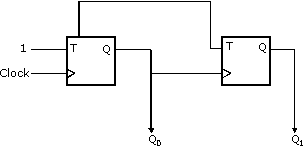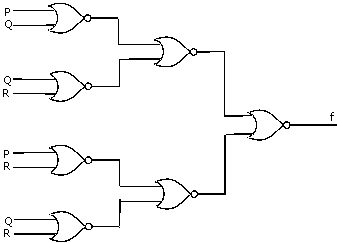GATE CS 2010
Question 21
Consider the methods used by processes P1 and P2 for accessing their critical sections whenever needed, as given below. The initial values of shared boolean variables S1 and S2 are randomly assigned.
Method Used by P1 while (S1 == S2) ; Critica1 Section S1 = S2; Method Used by P2 while (S1 != S2) ; Critica1 Section S2 = not (S1);Which one of the following statements describes the properties achieved?
Question 22
A system uses FIFO policy for page replacement. It has 4 page frames with no pages loaded to begin with. The system first accesses 100 distinct pages in some order and then accesses the same 100 pages but now in the reverse order. How many page faults will occur?
Question 23
Which of the following statements are true?
I. Shortest remaining time first scheduling may cause starvation II. Preemptive scheduling may cause starvation III. Round robin is better than FCFS in terms of response time
Question 24
Consider a company that assembles computers. The probability of a faulty assembly of any computer is p. The company therefore subjects each computer to a testing process.This testing process gives the correct result for any computer with a probability of q. What is the probability of a computer being declared faulty?
Question 26
The degree sequence of a simple graph is the sequence of the degrees of the nodes in the graph in decreasing order. Which of the following sequences can not be the degree sequence of any graph?
(I) 7, 6, 5, 4, 4, 3, 2, 1 (II) 6, 6, 6, 6, 3, 3, 2, 2 (III) 7, 6, 6, 4, 4, 3, 2, 2 (IV) 8, 7, 7, 6, 4, 2, 1, 1
Question 27
Suppose the predicate F(x, y, t) is used to represent the statement that person x can fool person y at time t. which one of the statements below expresses best the meaning of the formula ∀x∃y∃t(¬F(x, y, t))?
Question 28
Question 29
In the sequential circuit shown below,if the initial value of the output Q1Q0 is 00,what are the next four values of Q1Q0?
[caption width="800"] [/caption]
[/caption]Question 30
A 5-stage pipelined processor has Instruction Fetch(IF),Instruction Decode(ID),Operand Fetch(OF),Perform Operation(PO)and Write Operand(WO)stages.The IF,ID,OF and WO stages take 1 clock cycle each for any instruction.The PO stage takes 1 clock cycle for ADD and SUB instructions,3 clock cycles for MUL instruction,and 6 clock cycles for DIV instruction respectively.Operand forwarding is used in the pipeline.What is the number of clock cycles needed to execute the following sequence of instructions?
Instruction Meaning of instruction I0 :MUL R2 ,R0 ,R1 R2 ¬ R0 *R1 I1 :DIV R5 ,R3 ,R4 R5 ¬ R3/R4 I2 :ADD R2 ,R5 ,R2 R2 ¬ R5+R2 I3 :SUB R5 ,R2 ,R6 R5 ¬ R2-R6
There are 63 questions to complete.
Last Updated :
Take a part in the ongoing discussion
